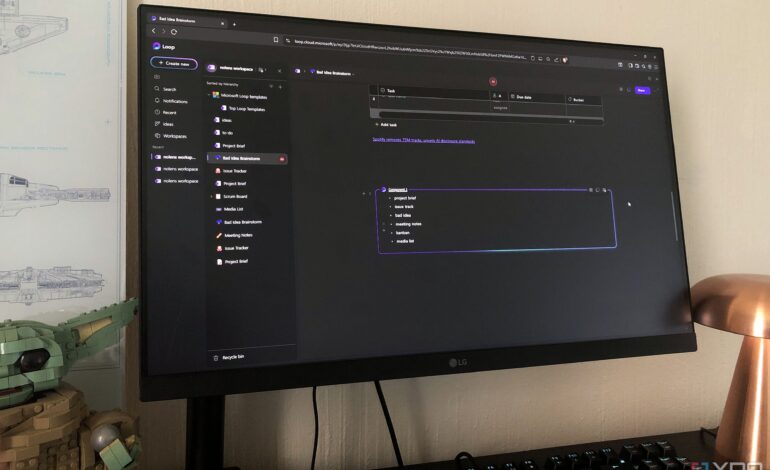Microsoft Loop Emerges as a Streamlined Alternative to Notion

As productivity tools continue to evolve, Microsoft Loop has gained traction as an alternative to Notion for users seeking a more streamlined experience. Many individuals, including avid users of various note-taking and project management applications, have begun transitioning from Notion to Loop, citing its convenience and user-friendly interface as key factors in their decision.
Streamlined Note-Taking and Writing
One of the primary uses for Microsoft Loop is note-taking. Users appreciate the ability to keep the application readily accessible in a pinned browser tab. This design allows for quick jotting down of ideas and tasks while researching or writing. The process of creating new pages is efficient, taking less than a second, and users can easily organize them in a hierarchical structure similar to traditional file systems.
Loop also employs a simple command system that enables users to format text, create lists, and insert links with ease. This streamlined approach reduces the clutter often found in other productivity apps, making it an appealing option for those who prioritize efficiency.
Reusable Components and Project Management
A standout feature of Microsoft Loop is its ability to handle reusable content through Components. Users can create blocks—such as tables, task lists, or notes—that can be integrated across multiple pages. These Components update in real-time, ensuring that any changes made in one location are reflected everywhere, eliminating the need for manual syncing found in similar applications.
This functionality presents a significant advantage over Notion’s synced blocks, as Loop’s Components are faster to create and easier to manage. Additionally, their integration with the entire Microsoft 365 suite allows users to incorporate these Components into popular applications like Word, Teams, and Outlook seamlessly.
Another critical aspect of Loop is its lightweight table functionality. While Notion offers a more complex database system, users often find that Loop’s simple tables meet their needs without overwhelming them. Loop allows for the addition of due dates, collaborators, and progress tracking, while also providing advanced filtering options to customize views based on specific criteria. This flexibility enhances project management capabilities without the complexity of traditional databases.
Improved Templates for Enhanced Usability
Regarding templates, Microsoft Loop simplifies the process of finding and using them. Users can access a clearly labeled “Template Gallery” at the bottom of the page when creating a new project. This feature offers 24 templates that cater to basic task and project management needs, providing a more straightforward approach compared to Notion’s extensive marketplace.
While Notion boasts a larger selection of templates, many users find themselves overwhelmed by the options available. In contrast, Loop’s curated selection allows for quick access and decision-making, appealing to those who prefer a more frictionless experience.
Overall, Microsoft Loop is not positioned as a more powerful tool than Notion; rather, it is recognized for its speed, simplicity, and ease of use. As users increasingly prioritize convenience in their productivity tools, Loop is emerging as a strong contender in the market.






